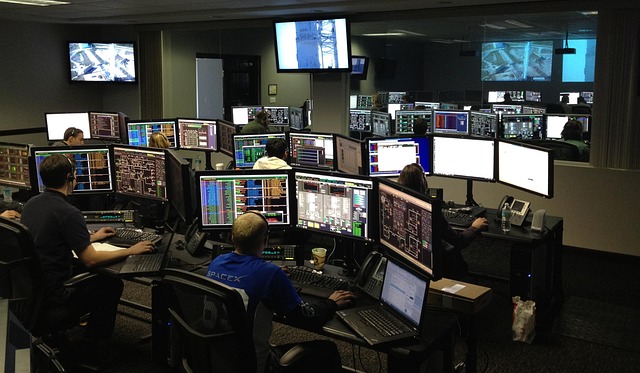Automated aquarium technology is transforming fishkeeping with smart sensors and algorithms that monitor and maintain water conditions, reducing manual intervention and ensuring aquatic life health. By precisely adjusting feeding, filtration, and lighting, these systems offer low-maintenance care, fostering balanced ecosystems. Future advancements promise even smarter, more accessible aquariums through AI and remote control, addressing current challenges to make automated aquarium care the norm.
Automated aquarium technology is transforming the way we maintain our underwater ecosystems. By integrating intelligent systems, hobbyists and professionals alike can achieve effortless care for their aquatic environments. This article explores the dynamic realm of automated aquarium solutions, highlighting key benefits, essential components, and future prospects. Discover how these innovations simplify maintenance tasks, enhance water quality, and foster thriving aquascapes, revolutionizing the way we interact with our aquatic friends.
Understanding Automated Aquarium Technology
Automated aquarium technology is transforming the way aquariums are maintained, offering a hassle-free and efficient solution for both hobbyists and professionals alike. This innovative approach leverages smart sensors, advanced algorithms, and automated mechanisms to monitor and regulate various aquatic parameters, ensuring optimal conditions for fish and plants. By automating tasks such as water quality testing, feeding schedules, and lighting adjustments, users can enjoy the beauty of a pristine aquarium without expending significant time and effort on maintenance.
The heart of automated aquarium technology lies in its ability to collect real-time data from multiple sources, including water temperature, pH levels, ammonia concentrations, and light intensity. These sensors continuously monitor the aquatic environment, triggering specific actions when certain thresholds are crossed. For instance, if ammonia levels rise, the system might automatically activate a water filtration cycle or adjust feeding schedules to prevent overfeeding, which can cause harmful algal blooms. This proactive approach ensures a balanced ecosystem, promoting the health and longevity of aquarium inhabitants.
Benefits of Implementing Automated Solutions
Implementing automated aquarium technology offers numerous benefits for both aquarist enthusiasts and professionals alike. One of the most significant advantages is the ability to maintain water quality with minimal intervention. Automated systems can monitor and adjust parameters such as temperature, pH levels, and salinity precisely and efficiently, ensuring a stable environment for aquatic life. This not only saves time but also reduces the risk of human error, leading to healthier fish and plant growth.
Additionally, automated aquarium technology streamlines routine tasks, freeing up owners’ or staff’s time. Features like automatic feeding mechanisms and water circulation systems eliminate the need for frequent manual checks. These innovations allow for more focused attention on complex tasks and creative aspects of aquarium care, enhancing overall satisfaction and fostering a deeper connection with one’s aquatic ecosystem.
Key Components and Features
The core of any successful automated aquarium technology lies in its key components and features designed to mimic natural water quality maintenance processes. These include advanced sensors that monitor parameters such as pH levels, temperature, ammonia, nitrite, and nitrate concentrations. These sensors trigger automatic adjustments to filtration, heating, and chemical dosing systems when necessary, ensuring optimal conditions for aquatic life.
User-friendly control panels and mobile apps further enhance the convenience of automated aquarium technology. They provide real-time data access and remote control capabilities, allowing owners to manage their aquariums from anywhere. Customizable settings, scheduling options, and alerts for maintenance tasks contribute to effortless care, making it a game-changer for both hobbyists and professionals in the aquarium industry.
Future Prospects and Challenges
The future of automated aquarium technology looks promising, with continuous innovations set to transform home aquariums into seamless, low-maintenance ecosystems. Advanced sensors and AI algorithms can monitor water quality, adjust temperature, and detect anomalies in real time, ensuring optimal conditions for aquatic life. Smart feeding systems, automated cleaning mechanisms, and remote control capabilities will empower aquarium owners to manage their tanks from anywhere, fostering a deeper connection with their underwater worlds.
Despite these exciting prospects, challenges remain. Cost can be a barrier to entry for advanced automated systems, limiting accessibility for casual hobbyists. Ensuring compatibility and reliability of various components across different tank sizes and types is another hurdle. Privacy and security concerns surrounding remote access must also be addressed. Nevertheless, ongoing advancements in automation technology, coupled with heightened consumer demand for convenience and efficiency, point towards a future where automated aquarium solutions will become the norm, revolutionizing how we interact with and care for these captivating underwater habitats.
Automated aquarium technology offers a revolutionary approach to aquariums, simplifying maintenance tasks for enthusiasts. By understanding its key components and benefits, including energy efficiency and time-saving features, one can effortlessly manage aquatic ecosystems. While challenges exist, future prospects suggest further integration, enhancing the overall experience. Embracing automated solutions allows folks to focus on the joy of observation rather than the labor of upkeep, fostering a thriving underwater world with minimal effort.
